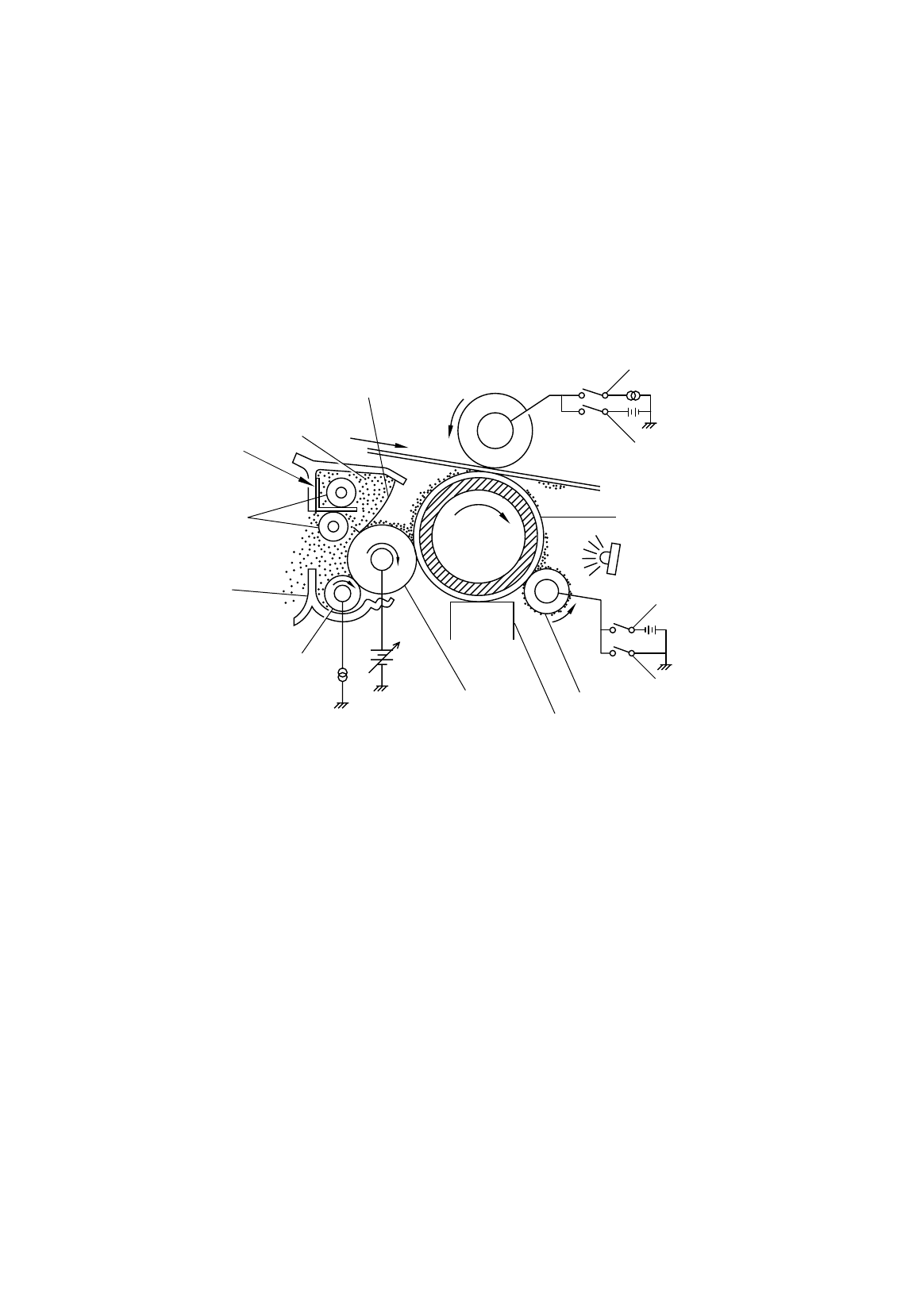
II-32
2.5.3 Developing
Developing causes the toner to be attracted to the electrostatic image on the drum so as
to transform it into a visible image.
The developer consists of a non-magnetic toner. The development roller is made of
conductive rubber and the supply roller (which is also made of conductive sponge) rotate
against each other. The toner is charged and carried from the supply roller to the
development roller. The toner adheres to the development roller and is conveyed to the
drum at an even thickness controlled by the blade. The toner is nipped between the
development roller and the drum and developed onto the latent image on the drum. The
electrostatic field between the drum and the development roller, which is DC-biased from
the high-voltage power supply, creates the electrostatic potential to attract toner particles
from the development roller to the latent image area on the drum surface.
Fig. 2-40
2.5.4 Transfer
(a) Transfer process
After the drum has been charged and exposed, and has received a developed
image, the toner formed is transferred onto the paper by applying a negative
charge to the back of the paper. The negative charge applied to the paper causes
the positively charged toner to leave the drum, and adhere to the paper. As a
result, the image is visible on the paper.
(b) Cleaning process of transfer roller
If the toner is not transferred onto the paper perfectly, it is possible that there may
be residual toner on the drum which will adhere to the transfer roller. The transfer
voltage changes to a positive voltage during non-printing rotation of the drum.
Therefore the transfer roller is cleaned by returning the positively charged toner
adhering to the transfer roller onto the photo-conductive drum.
(
a
)
Transfer process
[
ON
]
(
b
)
Cleanin
g
process
[
ON
]
Drum
Erase lamp
(a) Collecting process
(b) Discharging process
Cleanin
g
roller
Development
roller
DC-bias
SR-bias
Supply roller
Develop housing
Auger
Separator
Blade
Transfer roller
Toner


















